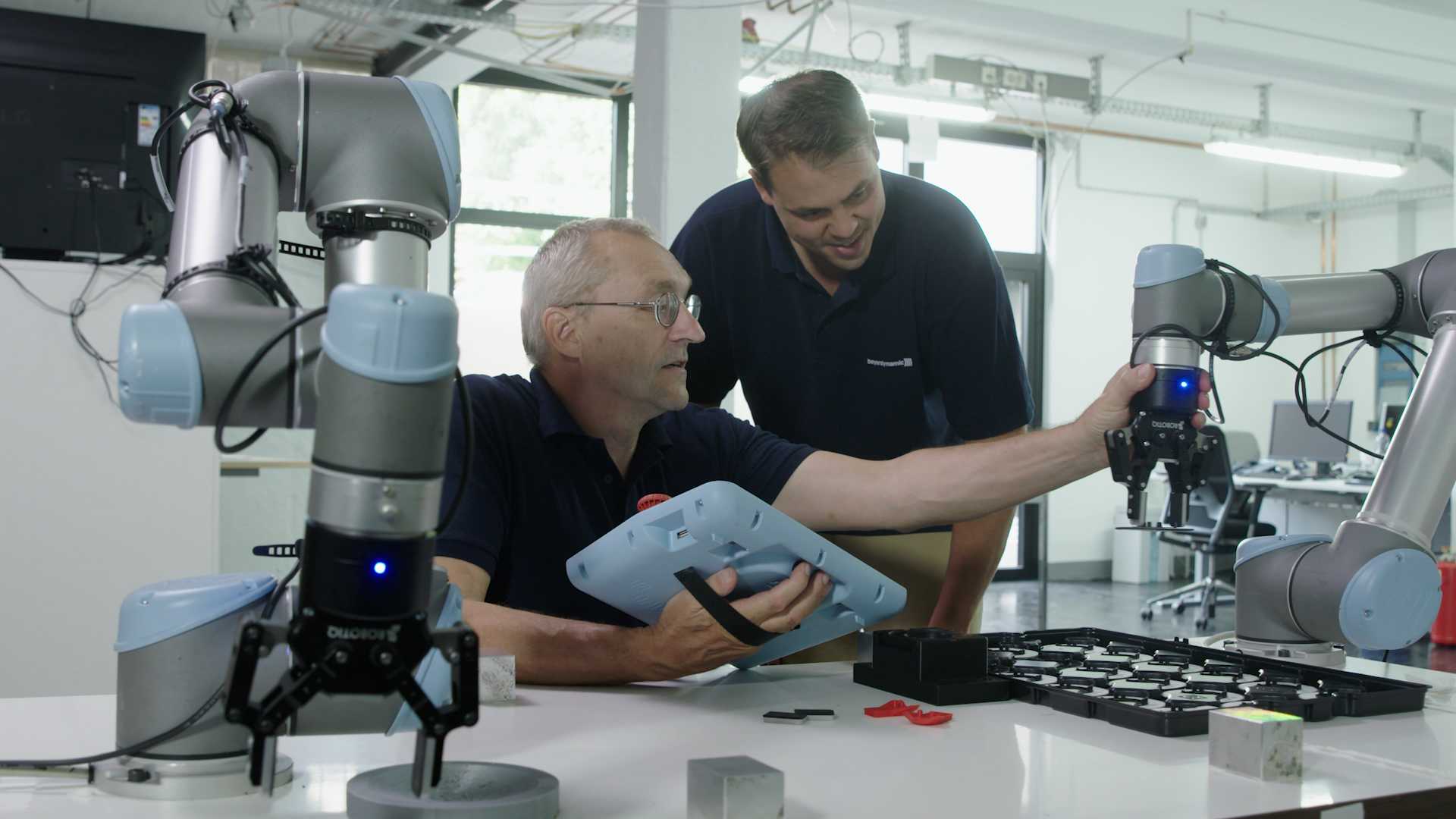Six Steps for Preparing Your Team for Lean Robotics

Posted on Oct 02, 2017 7:00 AM. 5 min read time
Why should you prepare your team for Lean Robotics? How do you do it? Here's the process to ensure success.
Your Lean Robotics implementation can only be successful if your team is completely on board. By properly preparing your team, you can be sure the everyone is happy about the idea of using robots, use each employee to their full potential and even save yourself from wasting time.
But, how do you prepare your team?
Should you just send round an impersonal email memo saying "We're introducing robots to the shop floor"? No. That's not the best way to approach it.
In this article, we give a six step process for properly preparing your team.
Four Reasons You Need to Prepare Your Team
Why should you spend extra time and effort preparing the team? Why not just dive straight into your robot deployment?
Here are four great reasons:
- It reduces bad feeling — Robots have a lot of baggage associated with them in some parts of the world. Your team may be uncertain about robots. They may worry that they'll lose their jobs, either because the robot will take it over or because they do not have robotics skills so could be supplanted by a more skilled worker. Addressing these fears early on is important for making sure the robots are accepted by everyone.
- It maximizes the team's potential — Lean Robotics defines several "common wastes" which can impede the robot cell deployment. One of the most important of these is "Underutilizing Human Potential." Team members can only contribute fully to the robotics deployment if they are involved early.
- It improves your use of the robot — The team are the most knowledgeable people about your manufacturing process. This makes them vital because a successful Lean Robotics implementation relies on three categories of skill: robotics skills, project management skills and knowledge of your manufacturing process.
- It is more efficient and economical — A Lean Robotics implementation involves developing skills within your team. Some of these will have to be introduced through training. However, it is likely that members of your team have existing skills which can contribute to the deployment. Utilizing their skills will help to get robots off the ground quicker and will reduce the initial training investment.
Some people, myself included, like to over-prepare before bringing an idea to the team. If you're the same, it may be challenging to bring the team on board before you have prepared every detail. However, the sooner they get involved the better your Lean Robotics deployment will be.
Six Steps to Prepare Your Team for Lean Robotics
Here is a process that you can use to prepare your team. The order of steps might be a little different in your case, depending on how well developed your idea is.
1. Clarify Your Plan
The first step of Lean Robotics is to define your project scope. This means identifying which manual cell you want to automate, choosing appropriate metrics to measure progress and setting a timeline for the deployment.
If you already have a specific application in mind, it is a good idea to do some preparatory work to develop the idea enough to be able to present it to the rest of the team.
However, if you have not chosen a specific application, you might want to get the team involved earlier to help come up with potential applications for the robot.
2. Identify Stakeholders
Only some employees will be involved with the robot deployment. Decide which members of your team should be brought on board and at what stage.
Begin by thinking about all the people within your business who are, or could be, affected by Lean Robotics. Some stakeholders will be directly involved in the robot deployment (e.g. the lead automaton engineer, line workers, programmers, etc). These people should be brought on board as soon as possible.
Other stakeholders will simply be affected by the robots' presence in the workshop (e.g. a cleaner who may have to wipe down the robot surfaces, workers from other parts of the manufacturing line, etc). These people can be updated about the project at a later stage.
3. Identify the Skills Needed
Lean Robotics relies on a core set of skills in your team. However, you do not have to have all these skills to get started — you can introduce them through training when they are needed.
Each phase of deployment has its own set of key skills. For example, the Design phase requires manual task mapping skills, robot cell design skills and several more. The Integrate phase requires programming, mechanical installation and industrial communication skills. You can find a complete list of skills by downloading our "Team Skills Spreadsheet" by clicking on the link at the end of this post.
Part of the Lean Robotics process is to identify which team members can provide each of these skills.
4. Meet With the Team
As soon as you have loosely defined your project scope, it is a good idea to set a meeting with your team to discuss it. Don't fall into the trap of trying to over-prepare everything before you bring it to them. It's usually more efficient to develop your deployment plan collaboratively with everyone.
During your meeting, discuss the skills you identified in the previous step. Find out which members of your team already have some skills and experience in these areas. From this information, you can assign the roles in the next step. Also, gather ideas and input from the team about your chosen robot application.
5. Assign Roles
There are ten key roles in Lean Robotics. To ensure that the deployment goes as smoothly as possible, each of these roles should be assigned to a member of your team. This doesn't mean that you need to have ten people on the deployment team, two or three roles can be fulfilled by the same person. However, try not to overload one person with many roles as this can easily lead to an inefficient deployment.
Roles in Lean Robotics include: manufacturing manager, project leader, project coordinator, engineer, installer, programmer, operation and maintenance worker, process adviser, procurement person, and continuous improvement person. You can find out more about these roles at leanrobotics.org.
6. Set Next Steps
At the end of your meeting with the team, decide on everyone's "next action" and set a date for the follow up meeting. Now that you have started the robot deployment process, you want to keep up momentum. This is easier when everyone knows what they have to do next and has a defined date when they will report back on their progress.
Where to Find Out More About Preparing Your Team for Lean Robotics
Lean Robotics is a specific application of Lean concepts to make sure your robot cell deployment is a success.
You can learn more about Lean Robotics by going to leanrobotics.org.
Make sure to download a copy of the Team Skills Spreadsheet when you are there!

.png?width=640&name=Schnitt_v3.00_01_20_00.Standbild008%20(2).png)






Leave a comment